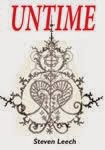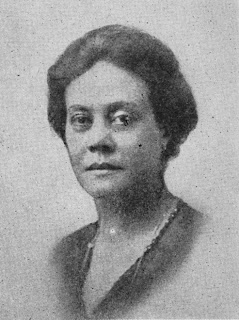By Phillip
Bannowsky
A Review of Love in the Time of Unraveling
by Franetta
McMillian
With monks
who channel voudoun spirits and
bisexual scientists who heal the earth, Franetta McMillian’s Love in the Time of Unraveling confronts
our current dysfunctions as few post-apocalyptic works dare. Mad Max and The Road more escape our world than expose it, abandoning their
heroes to a feral struggle in an empty landscape. We may enjoy vicarious
bloodletting or lament our Hobbesian fate, but either way, the life we know is
over.
In McMillian’s
future, set in the latter part of the present century, the power structure that
preceded the collapse is still holding on. One-percenters luxuriate beneath an
air-conditioned Dome while we ninety-nine percenters wheeze through short and
brutish lives in a toxic “Outside,” texting and sharing videos from hermetic
abodes. We don hazmat suits to commute, often on ferries, given the high sea
level of our iceless world. The smog that choked 2013 Bejing and Mexico City is
ubiquitous now and getting worse. October swelters but the sun never shines. Beauty
fades before it ripens, and we die young of disease or crushed in collapsing
mines. Protest is permissible, but
only in “free-speech” zones, just like 2013. Adding insult to injury, Domer
do-gooders slum in the Outside. The press gossips, but rarely reveals. The
market is up, while prosperity is down. Yet spiritually and sexually, our world
is very much alive.
The first in
this collection of interrelated stories concerns Magdalena Ocunto, a seven-foot
former hacker and black priest-in-training in the Knights of the New Star, a
monastic order of the “New Catholic Church.” When the environmental cataclysm split
the Church, it also unraveled Cartesian reality. Ocunto can read thoughts; the voudoun demigods will speak through her.
Her first big assignment is to write computer code to crash the stock market
during the G20, still doing mischief at century’s end. Her church, in the
borderlands between politics and spirit, calls this a “deep act of conscience.”
Then we meet
billionaire scientist Lillian Ruby, whose androgyny in name and orientation
re-enforces the borderlands theme. Lillian, who came from the “Deep Outside,” a
now uninhabitable part of Louisiana, gathers fellow prodigies to heal the
earth. One of his recruits is David Grove. Over red wine and marijuana
(Lillian’s preference), their collaboration grows to love. Love is the healing
alchemy in this work.
For example,
Allison Flowers, a Domer and revolutionary graffiti artist, has the power to
heal with touch or, for more serious maladies, with sex.
Love, both
sacred and worldly, binds Morian Watts and his mentor, Father Allen, who trains
him to release the souls of the dying and perform exorcisms. Though he hates
the super rich, Morian exorcises seven-year-old Caitlyn Traynor, a mine baron’s
daughter, who is haunted by the workers who died in her father’s mine, called Destination
Hill.
This echo of
the 2010 Massey Mine disaster is not the only place where McMillian confronts
our contemporary calamities. The Upper Ninth Zone, setting for much of the
action, is located in a region known as the Crescent and suggests the inundated
Ninth Ward of New Orleans, the “Crescent City.” There is Great Mountain
Security, a Blackwater-like private army that protects the barons from the
growing revolt. There is even a super hurricane called Kali, sounding like
Katrina and Sandy and named for the Hindu goddess of time-doomsday-death.
Accompanying all these disasters are End Times Signs and Wonders. Of Kali,
Morian Watts says, “Sometimes an event is so unthinkably horrible that it
actually blows a hole in time and everything becomes unsettled.” He adds that the
outcome, unlike that of Tim LaHaye’s Armageddon, “is malleable. It could all
turn up roses or it could all go to shit.”
The extraordinary
cast includes members of the Richard Corey Club, teens planning suicide by the
supernatural psychedelic Blue Sky; Mei Ling, a Beijing transgender
hooker-cum-weaponized HIV terrorist; and various members of the families
Traynor, Flowers, and Storm: Innesto Storm, an Outsider and Allison’s summer
fling; his estranged wife Angie, a psychic and devotee of voudon; and son Zaden, a prodigy who declines to join Lillian Ruby’s
firm. By the time we get to the final episode, a letter by Lillian Ruby to
Allison Flowers, we are invested in these characters and their struggles, not
only because they are so gripping, but because they are our own. Happily, Lillian’s
letter suggests a sequel.
Science fiction
often projects a limited notion of the future. Whether it is gee-whiz-bang
gimmickry or dystopian nightmares, it tends to repeat our dominant ideology of
individual entrepreneurs discovering exotic natives. It is blind to the
humanity not only of the natives that dwell in the future, but of the natives
that struggle in the now.
If you are
one of these natives, this book is for you, for Love in the Time of Unraveling is about now, where now is heading, and
how we may prevail. Franetta McMillian peels off our time’s blinkers and lets
us look outside the lines, in the borderlands between genders, classes, and
races and between Cartesian reality and the spirit world.
As Lillian Ruby asserts in
his missive to Allison Flowers “You lived in the borderlands, outside the
lines, and there is a wealth of power there.”
You can order Love in the Time of Unraveling at Amazon.
You can order Love in the Time of Unraveling at Amazon.








